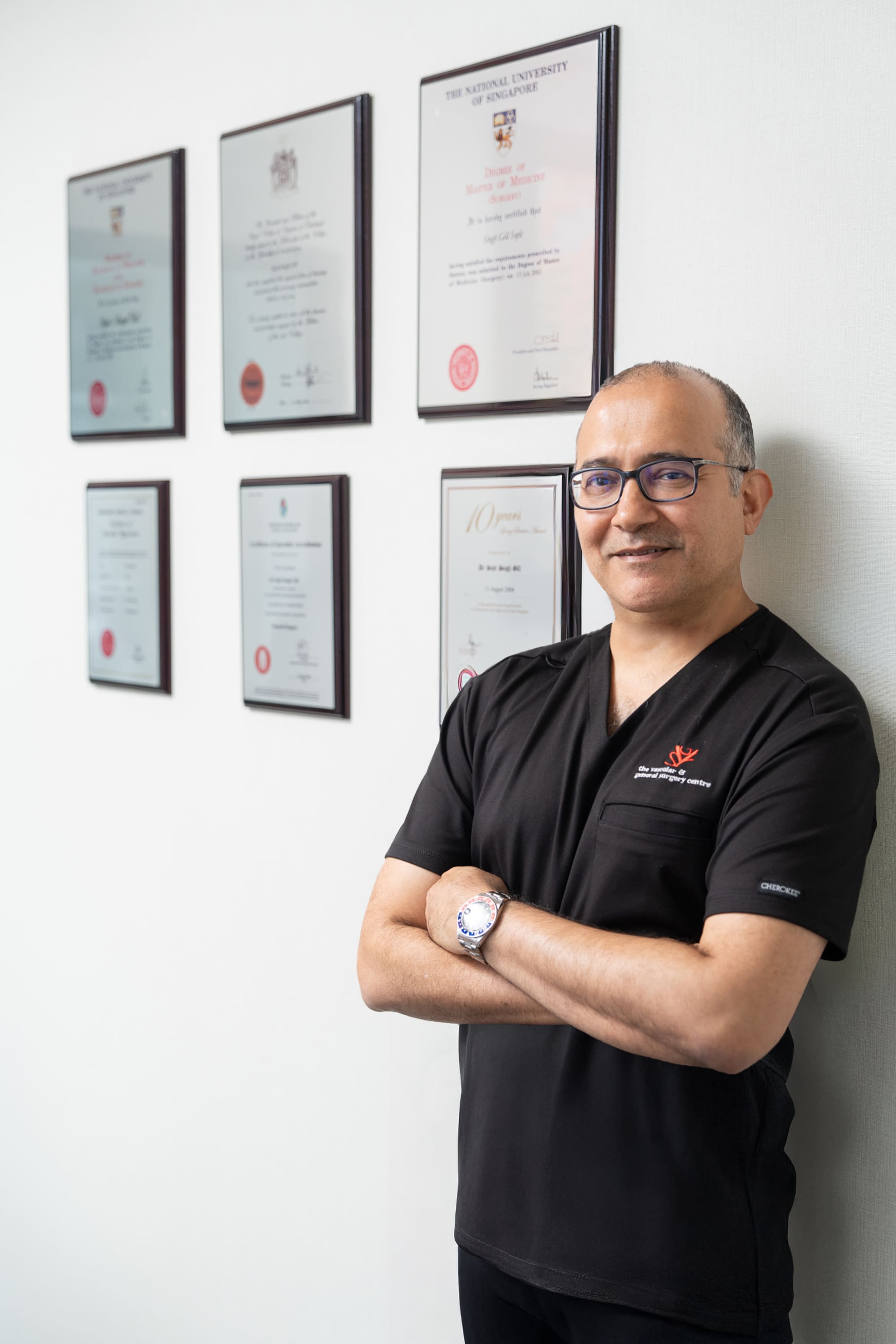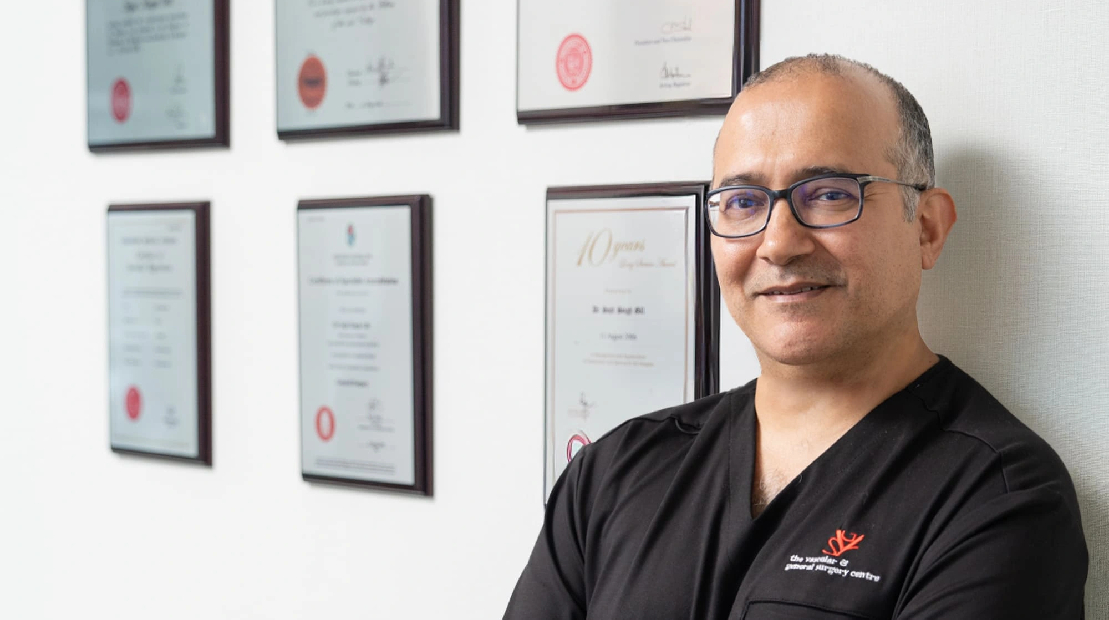During the Colonoscopy
The procedure is usually done in a specialised endoscopy suite and takes around 20 to 30 minutes.
Here is what you can expect:
Sedation
You’ll be given light sedation or intravenous medication to help you relax and stay comfortable. You may feel drowsy but generally remain conscious. Some patients may not remember the procedure afterward.
Positioning
You will lie on your left side with your knees drawn toward your chest. This position helps to straighten the colon, allowing the scope to pass through more easily.
Insertion of the colonoscope
Once you are sedated and in position, the doctor will gently insert a lubricated colonoscope
into your rectum. The colonoscope is a thin, flexible tube with a camera and light at the
tip, which allows the doctor to navigate through the colon and view its inner lining.
To improve visibility, air or carbon dioxide is introduced through the scope to inflate the
colon slightly. You may feel some pressure or mild cramping during this process, especially
as the scope moves around bends in the colon.
Visual examination and polyp removal
As the scope is advanced, the camera sends live images to a monitor, allowing the doctor to
inspect the entire length of your colon. If any abnormal growths, such as polyps, are
detected, they can often be removed during the same procedure using special instruments
passed through the scope.
The doctor may also take small samples of tissue for further analysis if needed. Removing
polyps at this stage can help prevent colorectal cancer from developing in the future.
Completion
Once the examination is complete, the doctor will carefully withdraw the scope while
continuing to inspect the colon lining. Any remaining air in the colon may be released to
help reduce bloating or cramping.
The entire process is conducted with careful attention to detail and patient safety. After
the procedure, you will be moved to a recovery area to allow the sedative to wear off, and
the medical team will monitor you for a short period before discharge.




